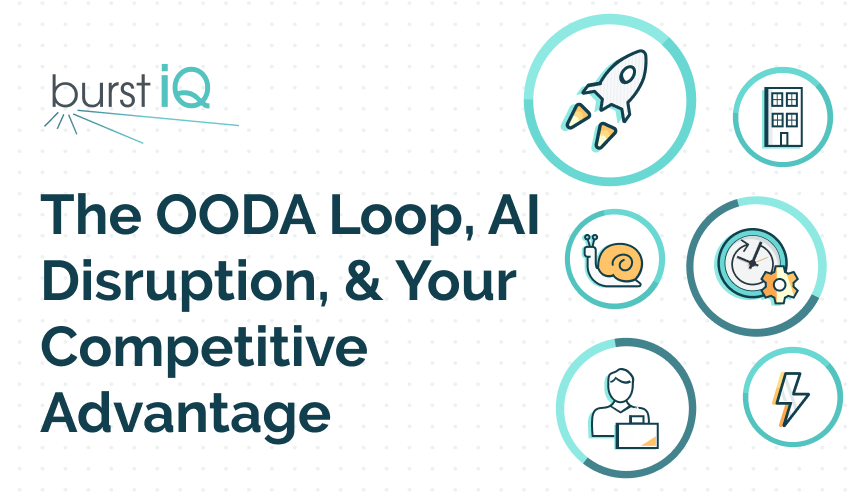Data Management Strategies
Data Management Strategies
Data Management Strategies for 2025 and Beyond: Best Practices, Trends, & Challenges
Data Management Strategies for 2025 and Beyond: Best Practices, Trends, & Challenges
The sheer volume, velocity, and variety of data generated will continue to grow at an exponential rate. The estimate is over 140 zettabytes per year and will continue to increase. To put that in perspective, one petabyte could hold roughly 20 million four-drawer filing cabinets full of text.
To stay competitive, businesses must adopt effective data management strategies to unlock the full potential of their data while addressing emerging challenges and trends.
This article highlights key best practices, emerging trends, and challenges in data management that business professionals and executives should prioritize to future-proof their organizations.
READ: What is Data Management?
Best Practices for Effective Data Management
Invest in Scalable Data Infrastructure
As the data universe expands, businesses must invest in infrastructure that can scale with their needs. Cloud-based data storage and processing solutions, such as hybrid and multi-cloud environments, provide the flexibility to handle growing datasets efficiently.
Scalable systems also help businesses avoid over-investment in hardware, ensuring cost-efficiency.
Adopt a Data Governance Framework
A data governance framework ensures data quality, consistency, and compliance with regulations such as GDPR, CCPA, COPPA (if dealing with children 13 years and younger in the U.S.), and numerous other global regulations.
By establishing clear policies on data ownership, access, and usage, organizations reduce risks and enhance internal decision-making both in data-informed observations and the speed at which choices are made.
In today’s digital marketplace, data governance is a fundamental pillar of data strategy that can’t be ignored.
Leverage Advanced Analytics & AI
Advanced analytics and artificial intelligence (AI) tools are transforming how businesses derive insights from data.
Machine learning algorithms can identify patterns, predict outcomes, and automate decision-making processes.
Incorporating AI into data management workflows not only improves efficiency but also unlocks new opportunities for innovation. The challenge isn’t the choice of AI or machine learning capabilities to select from; it’s the security and privacy implications tied to such systems.
Ensuring Data Security & Privacy
With cyber threats on the rise, safeguarding data is critical. According to IBM, “While organizations are moving quickly ahead with gen AI, only 24% of gen AI initiatives are secured.”
Implementing end-to-end encryption, multi-factor authentication, and regular security audits can help protect sensitive information, most especially if using a blockchain-based foundation such as BurstIQ’s LifeGraph® platform.
Additionally, organizations should foster a culture of accountability by training employees on data privacy best practices.
Focus on Data Integration
As businesses rely on multiple sources of data—from customer interactions to IoT devices—ensuring seamless integration is critical. Implementing data integration tools and platforms enables organizations to consolidate disparate datasets, providing a unified view for more informed decision-making.
Emerging Trends in Data Management
Data Fabric Architecture
The concept of a data fabric is gaining traction as a way to simplify data management. This architecture enables businesses to connect disparate data sources across environments, creating a unified platform for accessing and analyzing data. By automating data discovery and integration, data fabric reduces complexity and enhances agility.
Edge Computing
With the proliferation of IoT devices and real-time applications, edge computing is becoming a key trend. By processing data closer to its source, edge computing reduces latency and improves the performance of critical applications. This is particularly valuable for industries like healthcare, manufacturing, and logistics.
Data Democratization
Empowering non-technical employees to access and analyze data is a growing priority. Low-code and no-code tools are enabling business professionals to derive insights without relying heavily on IT teams. This democratization fosters a data-driven culture across organizations.
Sustainability in Data Management
As businesses strive to meet sustainability goals, green data management practices are emerging. Energy-efficient data centers, carbon-neutral cloud services, and optimized storage solutions are becoming essential components of responsible data strategies.
Real-Time Analytics
Businesses are increasingly shifting from reactive to proactive decision-making. Real-time analytics tools provide instantaneous insights, enabling organizations to respond to opportunities and challenges as they arise. This trend is particularly significant in sectors like finance, retail, and e-commerce.
Challenges to Overcome
Managing Data Complexity
The diversity of data types and sources presents a major challenge. Unstructured data, such as images and videos, requires specialized tools and techniques for analysis. Additionally, integrating legacy systems with modern platforms can be a time-consuming and costly endeavor.
Complying with Evolving Regulations
Data privacy regulations are continuously evolving, and businesses must stay compliant to avoid penalties. Navigating regional laws, such as the EU’s GDPR or California’s CPRA, can be daunting, especially for global organizations. Staying ahead of regulatory changes requires both technological solutions and legal expertise.
Data Silos
Siloed data remains a persistent issue for many organizations. When departments operate in isolation, valuable insights are lost, and inefficiencies arise. Breaking down silos through collaboration and technology integration is crucial for maximizing the value of data.
Talent Shortages
The demand for skilled data professionals continues to outpace supply. Businesses face challenges in recruiting and retaining experts in data science, analytics, and cybersecurity. Upskilling existing employees and investing in training programs can help bridge this gap.
Balancing Cost & Value
As data management technologies evolve, costs can quickly escalate. Striking the right balance between investing in cutting-edge solutions and achieving ROI is a constant challenge. Businesses must carefully evaluate the long-term value of their data strategies.
Strategy to Future-Proof
By weaving these components into a cohesive roadmap—backed by measured milestones—organizations not only reduce risk and cost but also enable the agility needed to innovate continuously and outpace competitors. For a more complete overview on data management, read our pillar page content What is Data Management?

